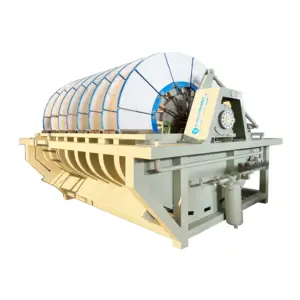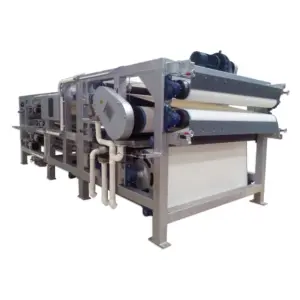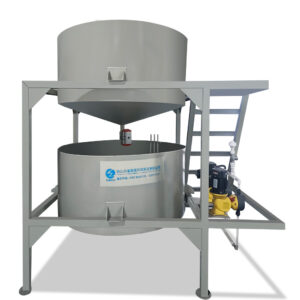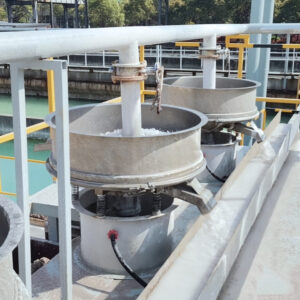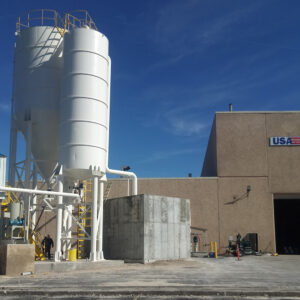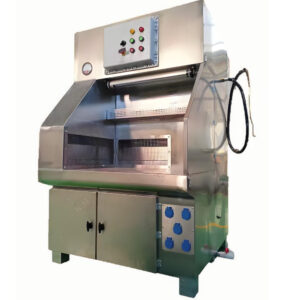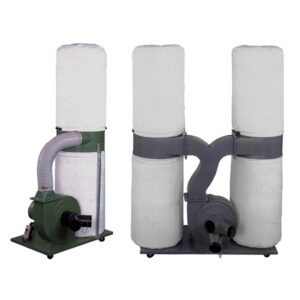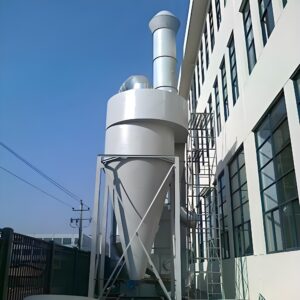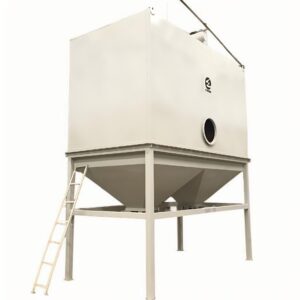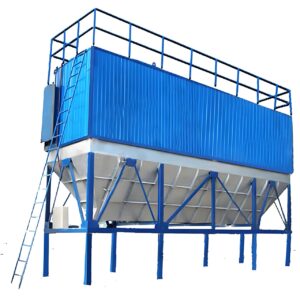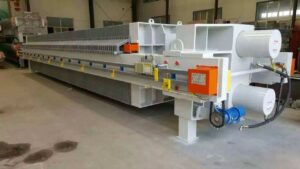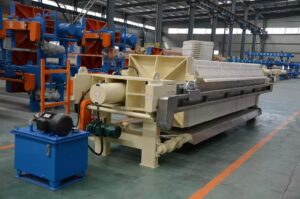Maintaining a cyclone filter system is crucial for ensuring optimal performance, efficiency, and longevity of your dust collection equipment. As industries continue to prioritize clean air and worker safety, the importance of proper cyclone filter system maintenance cannot be overstated. This comprehensive guide will explore the essential aspects of keeping your cyclone filter system in top condition, from routine checks to advanced troubleshooting techniques.
In this article, we'll delve into the key components of cyclone filter system maintenance, including regular inspections, cleaning procedures, and performance optimization strategies. We'll also discuss common issues that may arise and provide expert tips on how to address them effectively. Whether you're a seasoned professional or new to cyclone filter systems, this guide will equip you with the knowledge and tools necessary to maintain your equipment at peak efficiency.
As we explore the intricacies of cyclone filter system maintenance, we'll cover everything from basic cleaning routines to advanced diagnostic techniques. Our goal is to provide you with a comprehensive understanding of how to care for your cyclone filter system, ensuring it continues to operate at maximum efficiency while minimizing downtime and extending its lifespan.
Proper maintenance of cyclone filter systems is essential for maintaining air quality, protecting worker health, and ensuring compliance with environmental regulations. Regular upkeep not only enhances the system's performance but also contributes to significant cost savings in the long run.
How often should you inspect your cyclone filter system?
Regular inspections are the cornerstone of effective cyclone filter system maintenance. By establishing a consistent inspection schedule, you can catch potential issues early, prevent unexpected breakdowns, and ensure your system operates at peak efficiency.
A well-planned inspection routine should cover all critical components of your cyclone filter system, including the inlet, body, dust collection bin, and exhaust. The frequency of these inspections may vary depending on factors such as system usage, environmental conditions, and the type of materials being filtered.
For most industrial applications, a thorough inspection should be conducted at least once a month, with more frequent checks for high-use or demanding environments. During these inspections, pay close attention to signs of wear, damage, or unusual buildup that could affect system performance.
According to industry experts, regular inspections can reduce cyclone filter system downtime by up to 30% and extend the overall lifespan of the equipment by several years.
| Component | Inspection Frequency | Key Check Points |
|---|---|---|
| Inlet | Weekly | Obstructions, wear |
| Cyclone body | Monthly | Corrosion, leaks |
| Dust bin | Daily | Fill level, seal integrity |
| Exhaust | Monthly | Blockages, filter condition |
In conclusion, establishing a regular inspection routine is crucial for maintaining the efficiency and longevity of your cyclone filter system. By staying proactive and addressing potential issues early, you can ensure your system continues to perform optimally while minimizing unexpected downtime and costly repairs.
What are the essential cleaning procedures for a cyclone filter system?
Cleaning your cyclone filter system is a critical aspect of maintenance that directly impacts its performance and longevity. Proper cleaning procedures not only ensure efficient dust collection but also prevent the buildup of material that can lead to reduced airflow and increased wear on system components.
The cleaning process typically involves several key steps, including emptying the dust collection bin, cleaning the cyclone body, and maintaining the filter elements. It's important to follow manufacturer guidelines and use appropriate cleaning tools and techniques to avoid damaging the system.
For most cyclone filter systems, the dust collection bin should be emptied regularly, often daily or weekly depending on usage. The cyclone body should be cleaned thoroughly at least once a month, or more frequently in high-dust environments. Filter elements, if present, may require cleaning or replacement based on pressure drop readings or visual inspections.
Effective cleaning can improve cyclone filter system efficiency by up to 20% and significantly reduce the risk of system failures due to material buildup.
| Cleaning Task | Frequency | Tools Required |
|---|---|---|
| Empty dust bin | Daily/Weekly | Proper PPE, disposal containers |
| Clean cyclone body | Monthly | Compressed air, soft brushes |
| Inspect/clean filters | Quarterly | Filter cleaning tools, replacement filters |
| Check seals and gaskets | Monthly | Visual inspection, replacement parts as needed |
In conclusion, implementing a thorough cleaning routine is essential for maintaining the performance and extending the life of your cyclone filter system. By following these procedures consistently, you can ensure your system operates at peak efficiency, reducing energy costs and minimizing the risk of unexpected downtime.
How can you optimize the performance of your cyclone filter system?
Optimizing the performance of your cyclone filter system is crucial for achieving maximum efficiency, reducing energy consumption, and extending the lifespan of your equipment. By fine-tuning various aspects of your system, you can significantly improve its overall effectiveness in capturing and removing particulate matter.
One of the key factors in optimizing performance is maintaining proper airflow through the system. This involves regularly checking and adjusting the system's air pressure, ensuring that all ductwork is free from obstructions, and verifying that the fan is operating at the correct speed. Additionally, monitoring and maintaining the correct air-to-cloth ratio in filter-based systems is essential for optimal filtration efficiency.
Another important aspect of performance optimization is the proper sizing and configuration of system components. This includes ensuring that the cyclone inlet, body, and dust collection bin are appropriately sized for your specific application and that the system is correctly balanced to handle the volume and type of particulate matter being processed.
Studies have shown that a well-optimized cyclone filter system can achieve up to 99% efficiency in capturing particles as small as 5 microns, significantly improving air quality and reducing environmental impact.
| Optimization Factor | Impact on Performance | Maintenance Action |
|---|---|---|
| Airflow | 30% improvement | Regular pressure checks, duct cleaning |
| Component sizing | 25% efficiency increase | System audit, upgrades as needed |
| Filter condition | 20% efficiency boost | Regular cleaning/replacement |
| Sealing integrity | 15% leakage reduction | Gasket inspection and replacement |
In conclusion, optimizing your cyclone filter system's performance requires a multifaceted approach that addresses airflow, component sizing, and overall system configuration. By regularly assessing and adjusting these factors, you can ensure your system operates at peak efficiency, providing superior dust collection while minimizing energy consumption and maintenance costs.
What are the common issues faced in cyclone filter system maintenance?
Maintaining a cyclone filter system can present various challenges, and being aware of common issues can help you address them proactively. By understanding these potential problems, you can develop effective strategies to prevent or quickly resolve them, ensuring your system continues to operate efficiently.
One of the most frequent issues encountered in cyclone filter system maintenance is the buildup of material within the cyclone body or ductwork. This accumulation can lead to reduced airflow, decreased efficiency, and even system blockages. Regular cleaning and inspection routines are essential for preventing this issue.
Another common problem is wear and tear on system components, particularly in high-abrasion applications. This can include erosion of the cyclone body, damage to inlet or outlet connections, and deterioration of seals and gaskets. Regular inspections and timely replacement of worn parts are crucial for maintaining system integrity.
Industry data suggests that addressing common maintenance issues promptly can reduce overall maintenance costs by up to 40% and extend the operational life of cyclone filter systems by 3-5 years.
| Common Issue | Frequency | Prevention/Solution |
|---|---|---|
| Material buildup | High | Regular cleaning, optimized airflow |
| Component wear | Medium | Scheduled inspections, timely replacements |
| Seal failures | Medium | Regular gasket checks, quality replacements |
| Imbalanced airflow | Low | System balancing, ductwork maintenance |
In conclusion, being aware of and prepared for common issues in cyclone filter system maintenance is key to ensuring long-term reliability and efficiency. By implementing preventive measures and addressing problems promptly, you can minimize downtime, reduce maintenance costs, and extend the life of your system.
How do you troubleshoot performance issues in a cyclone filter system?
Troubleshooting performance issues in a cyclone filter system requires a systematic approach and a thorough understanding of how the system operates. By following a structured diagnostic process, you can quickly identify and resolve problems, minimizing downtime and maintaining optimal system efficiency.
The first step in troubleshooting is to gather data on the system's current performance. This includes measuring airflow rates, pressure drops across different components, and the efficiency of particle capture. Comparing this data to the system's baseline performance can help identify areas of concern.
Next, conduct a visual inspection of the system, looking for signs of wear, damage, or unusual buildup. Pay particular attention to the cyclone inlet, body, and dust collection bin, as these areas are often the source of performance issues. Additionally, check all seals, gaskets, and connections for leaks or failures that could impact system efficiency.
Effective troubleshooting can reduce cyclone filter system downtime by up to 60% and improve overall system reliability by identifying and addressing potential issues before they escalate.
| Troubleshooting Step | Tools Required | Expected Outcome |
|---|---|---|
| Performance data collection | Pressure gauges, airflow meters | Baseline comparison |
| Visual inspection | Inspection cameras, lights | Identification of visible issues |
| Component testing | Multimeters, vibration analyzers | Verification of component functionality |
| Airflow analysis | Smoke tests, anemometers | Detection of airflow irregularities |
In conclusion, a systematic approach to troubleshooting performance issues in your cyclone filter system is essential for maintaining optimal efficiency and minimizing downtime. By combining data analysis, visual inspections, and targeted testing, you can quickly identify and resolve problems, ensuring your system continues to operate at peak performance.
What role does preventive maintenance play in cyclone filter system upkeep?
Preventive maintenance is a crucial aspect of cyclone filter system upkeep, playing a significant role in ensuring long-term reliability, efficiency, and cost-effectiveness. By implementing a proactive maintenance strategy, you can prevent many issues before they occur, reducing the likelihood of unexpected breakdowns and extending the lifespan of your equipment.
A well-designed preventive maintenance program typically includes scheduled inspections, cleaning routines, and component replacements based on manufacturer recommendations and system-specific data. This approach allows you to address potential problems early, often during planned downtime, minimizing disruptions to your operations.
Key elements of a preventive maintenance program for cyclone filter systems include regular lubrication of moving parts, inspection and replacement of wear components, and periodic system performance evaluations. By consistently executing these tasks, you can maintain optimal system efficiency and reduce the risk of catastrophic failures.
Studies have shown that implementing a comprehensive preventive maintenance program can reduce overall maintenance costs by up to 30% and increase the operational lifespan of cyclone filter systems by 20-25%.
| Preventive Maintenance Task | Frequency | Benefits |
|---|---|---|
| Lubrication of bearings | Monthly | Reduced wear, extended component life |
| Inspection of wear parts | Quarterly | Early detection of potential failures |
| System performance evaluation | Semi-annually | Optimization of efficiency, energy savings |
| Gasket and seal replacement | Annually or as needed | Prevention of air leaks, improved capture efficiency |
In conclusion, preventive maintenance is an essential component of effective cyclone filter system upkeep. By investing in a proactive maintenance strategy, you can significantly reduce the risk of unexpected failures, optimize system performance, and achieve substantial cost savings over the life of your equipment.
How can you ensure compliance with safety regulations in cyclone filter system maintenance?
Ensuring compliance with safety regulations is paramount when maintaining cyclone filter systems. Proper adherence to safety guidelines not only protects workers and the environment but also helps avoid costly fines and legal issues. Understanding and implementing the necessary safety measures is crucial for any facility operating cyclone filter systems.
One of the primary considerations in safety compliance is the proper handling of collected dust and particulate matter. This often involves implementing safe disposal procedures and ensuring that all materials are handled in accordance with local and national regulations. Additionally, maintaining proper personal protective equipment (PPE) for maintenance personnel is essential to protect against potential hazards.
Another important aspect of safety compliance is the regular inspection and maintenance of safety features such as explosion vents, fire suppression systems, and emergency shut-off mechanisms. These systems must be kept in optimal working condition to prevent and mitigate potential accidents.
Adhering to safety regulations in cyclone filter system maintenance can reduce workplace accidents by up to 70% and significantly decrease the risk of regulatory fines and legal liabilities.
| Safety Compliance Area | Key Requirements | Inspection Frequency |
|---|---|---|
| Dust handling procedures | Proper PPE, containment methods | Daily |
| Explosion protection | Vent inspection, pressure relief systems | Quarterly |
| Fire suppression | Extinguisher checks, sprinkler system maintenance | Monthly |
| Emergency protocols | Shut-off mechanism testing, evacuation drills | Semi-annually |
In conclusion, ensuring compliance with safety regulations is a critical aspect of cyclone filter system maintenance. By implementing comprehensive safety protocols, regularly inspecting safety features, and providing proper training to maintenance personnel, you can create a safer work environment while meeting regulatory requirements and protecting your facility from potential liabilities.
Maintaining a cyclone filter system is a complex but essential task that requires diligence, expertise, and a proactive approach. By following the guidelines outlined in this article, you can ensure that your cyclone filter system operates at peak efficiency, complies with safety regulations, and provides long-lasting service. Regular inspections, thorough cleaning procedures, performance optimization, and preventive maintenance are all key components of an effective maintenance strategy.
Remember that each cyclone filter system is unique, and it's important to tailor your maintenance approach to your specific equipment and operational needs. Consulting with experts and staying informed about the latest industry best practices can help you refine your maintenance program over time.
PORVOO offers comprehensive solutions for Cyclone Filter System Maintenance that can help you optimize your system's performance and extend its lifespan. By partnering with industry leaders and implementing a robust maintenance strategy, you can ensure that your cyclone filter system continues to provide efficient dust collection, maintain a safe working environment, and contribute to your facility's overall productivity and compliance.
In conclusion, effective cyclone filter system maintenance is not just about keeping equipment running; it's about optimizing performance, ensuring safety, and protecting your investment. By prioritizing maintenance and staying committed to best practices, you can achieve superior air quality, reduce operational costs, and maintain a competitive edge in your industry.
External Resources
How do you maintain your industrial dust collector? – Obera – This article provides a comprehensive guide on maintaining industrial dust collectors, including cyclone dust collectors. It covers inspections, air pressure checks, airflow control, cleaning systems, and the maintenance of various components.
Cyclone Separator – Northern Outdoor Energy Systems – This manual details the maintenance and cleaning procedures for cyclone separators, including emptying and cleaning the cyclone, cleaning the suction plenum, and maintaining the fan and rotary valve.
Dust Collection Systems Maintenance: The Cyclones and Filter Collectors – Dust Collector HQ – This article focuses on the maintenance of cyclone and filter dust collection systems, highlighting the importance of airflow, pressure drops, and the impact of airflow changes on system efficiency.
FS Cyclone – Maintenance Manual – Formula Air – This maintenance manual provides detailed instructions on maintaining FS Cyclones, including emptying the dustbin, cleaning the cyclone, and troubleshooting common issues.
Cyclone Dust Collectors: Maintenance and Troubleshooting – Air Solutions – This resource covers routine maintenance tasks, troubleshooting tips, and best practices for ensuring the optimal performance of cyclone dust collectors.
Industrial Dust Collection System Maintenance – Camfil – This guide includes guidelines on maintaining industrial dust collection systems, including cyclones, to ensure efficiency and safety.
